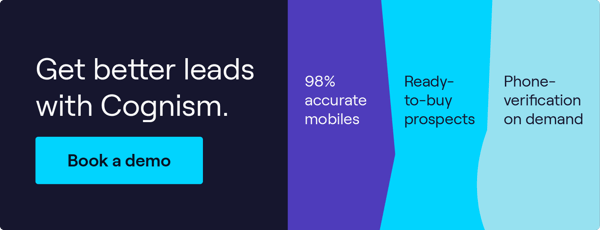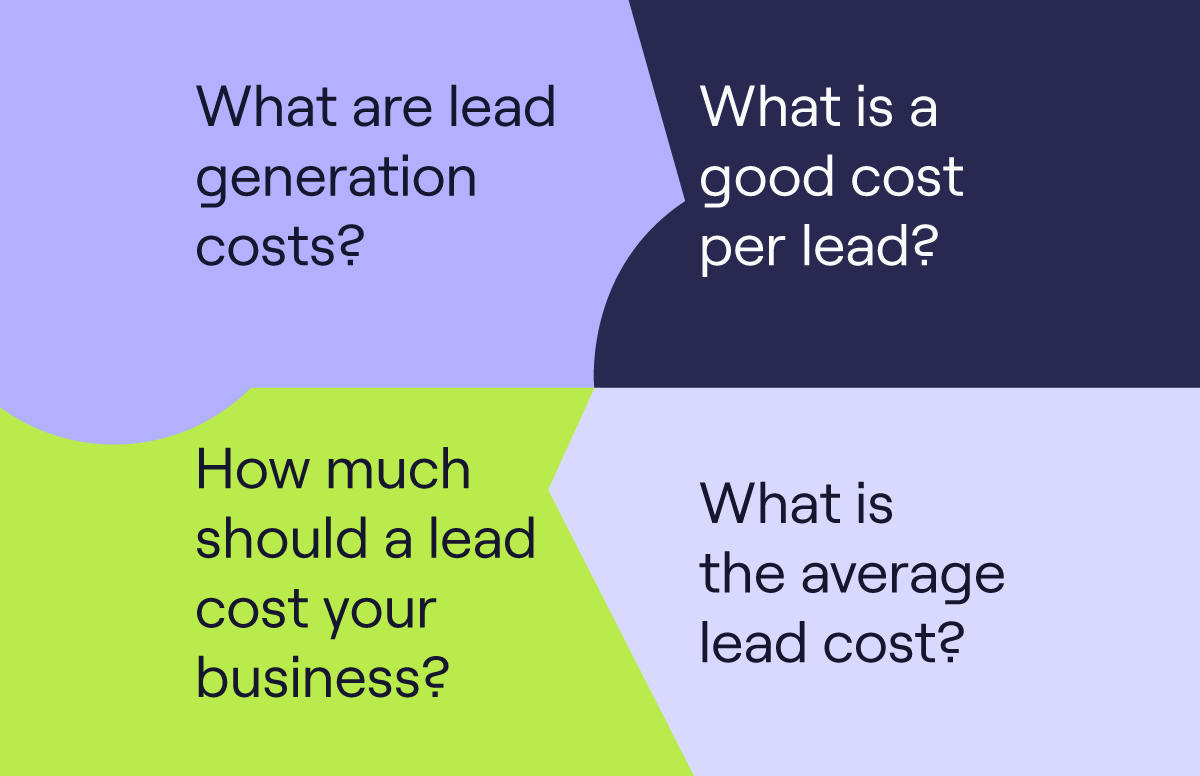What Is a Lead Source? Types, Tracking and Best Practices for 2024
In sales and marketing, the more you know about the channels and campaigns that bring in leads, the better.
Especially if you want to hone in on the most common source of your lead generation.
A lead source is how a lead discovers your business and is encouraged to take action. This could be via social media channels, your blog or direct mail. For example, a sales lead might have found your business through a LinkedIn post, decided to research you, visited your website, and is now highly likely to make a purchase.
No matter where your prospects are in the sales funnel, always be aware of these first-touch channels. It will help create a successful lead nurture strategy.
- The different channels that are most effective for lead generation.
- Best practices for improving the buyer journey with targeted content, interactions, and communications.
- How to track and manage leads that come from specific sources.
- The best tools to help manage your leads for more conversions.
Before you start scrolling 👇to discover the different types of lead sources, it's important to understand why they matter.
For instance, they allow you to:
- Understand how and why your audience finds you.
- Determine which lead sources are most valuable for creating new business.
- Improve the customer experience and buyer journey with targeted content.
- Measure and streamline your lead conversion success for a shorter B2B sales cycle.
- Supports lead management for better nurtures and a less complicated conversion process.
Here are 12 sources where you can find free leads.
The 7 most popular lead source channels
Sources of lead generation can be any channel through which a lead discovers your company or brand. Here’s a list of popular lead source examples:
1. Email marketing
Email is the best lead source for marketing. Every cadence, newsletter, campaign or shared bit of content helps generate more business. Having a company newsletter is especially useful as it helps you connect with leads who aren’t ready to buy or reconnect with lost leads.
2. SEO
Optimising your website for organic search can be a very valuable lead generation source. Especially if you’re looking to target leads in the USA or elsewhere. Your click-through rate, SERP positioning, website authority and backlinks play a big part in driving traffic and attracting potential customers.
3. Paid ads
PPC, display ads, and social media targeting are all major players in lead generation. You're creating more targeted leads by paying for ads because you're getting in front of prospects who fit your ICP.
4. Social media
Social platforms can be some of the best lead source types. LinkedIn, Facebook and Youtube, can help you create brand awareness through organic posts and videos or via paid ads and boosts to published content. It's one of the best sources of finance leads.
5. Referrals
A form of demand generation, referrals are the easiest leads to land. Since you’ve been recommended by a trusted associate or friend, they are warmer than other leads and stand a better chance of converting. Referrals generate sales leads in competitive industries like logistics and transportation.
6. Content
Blogs, gated or ungated content all play a major role in lead source marketing. Blogs contribute to helping to create organic traffic for SEO, and premium content that’s either gated or ungated helps build buyer relationships. The more value you have to offer a prospect, the better!
7. Events
Whether you choose to go virtual, in-person or hybrid, hosting or being invited as a guest to an event, sales podcast or webinar can be a boon for any organisation. Not only are you showcasing the knowledge and expertise of your brand, but you’re also creating new connections and drawing hot leads to your business.
Discover more about using these channels for a tactical approach to marketing and sales. Click to watch ▶️.
5 rules for creating and managing lead sources
You’ll want to start creating lead sources for your business right away, but don’t jump the gun. Understanding and implementing best practices for each channel will help you identify, analyse and improve the quality of the leads you receive.
Here are 5 best practices to implement :
1. Lead source vs campaign naming
The golden rule for keeping track of your leads is to give them a separate name from your campaigns. Sure, a campaign may be the source that got them to enter your sales funnel, but campaign names can change, and it will create confusion down the line. Especially when it comes to reporting.
2. Keep it simple
If you’re using a CRM to track leads, avoid getting too specific with your lead source categories. You might use many channels, but including all of them in your CRM will only add clutter. Rather segment them into separate categories. For example, you could include tags such as email, social media and events.
3. Define your top performers
Create a report to discover where your leads are coming from. But, keep in mind that some lead sources might not be tracked by attribution software. Leads that come through dark social will need to be tracked via your contact form.
Once you’re aware of where all your leads were generated, you can pinpoint your top-performing channels and put more effort into them over others.
4. Don’t be afraid to experiment
Experimentation is everything, especially when it comes to B2B marketing and sales. A/B test adverts, email campaigns and even SEO pages. This will teach you a lot about what doesn’t work so you can focus on what does.
5. Audit your channels
Always go back to a channel and do an audit. Is it set up correctly, and are you doing your utmost to bring in leads? Sometimes you’ll find that there’s an aspect of your channel that’s keeping them from converting. For instance, a broken link, a form that’s too long or a website that takes too long to load.
Examples of lead source management software
To make the most of your B2B lead generation channels you’ll need to invest in lead source tracking.
Many organisations choose to use open source lead management software that integrates well with reading CRMS. Here are 3 examples:
1. Salesforce
A leading CRM, Salesforce, gives you the opportunity not only to connect any tool that will make your job easier, but you can view your leads in multiple drag-and-drop pipelines, track lead sources and analyse them.
2. HubSpot
Use this all-in-one CRM platform to collect, track, manage, and measure leads and lead sources. Even better, HubSpot helps scale your business with powerful marketing, sales and RevOps software and tools.
3. CallRail
This solution allows you to track and measure calls and your marketing campaigns for lead attribution by source. Access reports for every lead source or your 5 favourites via a graph. Not only this, but CallRail includes a dashboard where you can view raw leads versus qualified leads.
💡 Here are our top tips to help you with your lead source attribution:
- Get the right tools
The right tech makes sales and marketing so much easier, and it’s no different when tracking lead sources. Demo a few attribution management tools, and choose one that works with your CRM and is right for your business needs. - Use UTM parameters
Be sure to track all your CTAs by attaching UTM parameters to your links. This way you’ll be able to discover and make note of popular lead sources.
- Keep score and accurate logs
Keep a log of all your leads and where they came from. Your attribution software can help you with that, but when saving each log be sure to use naming conventions that are accepted by the entire company - it will make your process much more streamlined!
Better leads with Cognism
Another fantastic tool to look into is Cognism. This sales intelligence tool is a lead source in itself with GDPR compliant, quality data on a global scale.
Why not give a demo a try?
Because with Cognism, you get more:
- More calls that go through to the right contacts ✔️
- More confidence when prospecting ✔️
- More hot leads ✔️
- And more incoming revenue ✔️
Click to book your demo 👇



